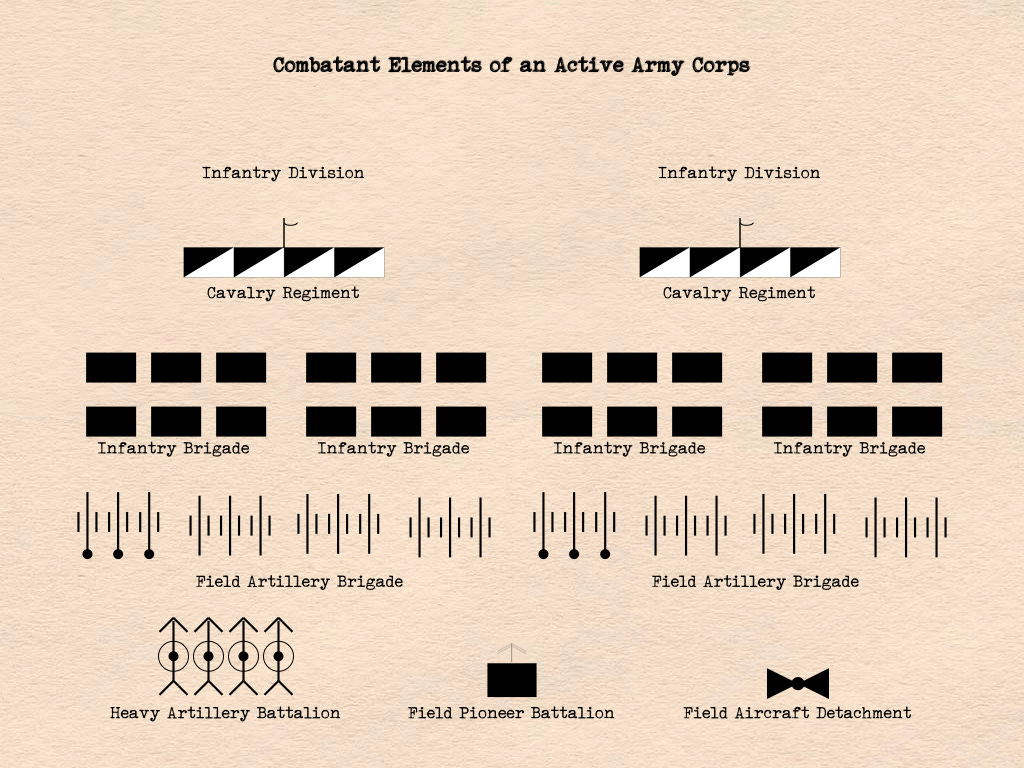Active Army Corps
The German Army of 1914
Most German soldiers who went to war in August of 1914 did so as part of an army corps. This was particularly true of professional soldiers, conscripts serving their initial term of service, or young reservists who had recently returned to civilian life.
At the very start of the war, the armies of the German Empire mobilized a total of twenty-five active army corps. In all of these cases, the active army corps was a modified version of the peacetime army corps of the same name. That is, to create an active army corps, each peacetime army corps filled all of its units with reservists, thereby bringing them up to “war strength.” At the same time, each peacetime army corps transferred units not needed by the active army corps to other wartime formations. (These included cavalry divisions, reserve infantry divisions, and the army troops of field armies.)
Once this process had been completed, each active army corps consisted of two active infantry divisions, a mobile heavy artillery battalion, and an aviation detachment. It was thus a formation of twenty-four infantry battalions (each of a thousand or so rifles), twenty-four field artillery batteries (each of six light field pieces), four heavy artillery batteries (each of four heavy field howitzers), and six reconnaissance aircraft.
Active army corps were larger than the other kind of army corps mobilized by the German armies at the start of World War I. Known as “reserve corps” (Reserve Korps), these had as much infantry as an active army corps, but fewer cavalry squadrons, no aircraft, and, in all cases but one, much less in the way of artillery. (The great exception to this rule was the Guard Reserve Corps, which had as much artillery, both field and heavy, as an active corps.)
Sources:
Information about the structure of active army corps comes from the organizational appendix of the first volume of Der Weltkrieg, the German official history of the First World War, Die Grenzschlachten im Western (“The Frontier Battles in the West.”)
Information about the structure of the Guard Reserve Corps comes from the organizational appendix to the second volume of the aforementioned Der Weltkrieg, Die Befreiung Ostpreußens (“The Liberation of East Prussia.”)



